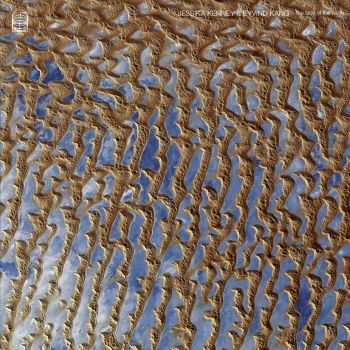JESSIKA KENNEY & EYVIND KANG "THE FACE OF THE EARTH"
JESSIKA KENNEY, voz, percusión, electrónica. EYVIND KANG, viola, setar, electrónica.
16/5/2013 Nachtstimmen 2013, Bauwagen, Moers (Alemania)
17/5/2013 Worm, Rotterdam (Países Bajos)
19/5/2013 Cafe Oto, Londres (Reino Unido)
23/5/2013 Jazz Dock, Praga (República Checa)
28/5/2013 Whelan's, Dublín (Irlanda)
29/5/2013 Café KoZ, Frankfurt (Alemania)
30/5/2013 Cultuurcentrum Berchem, Amberes (Bélgica)
4/6/2013 N.K. Projekt, Berlín (Alemania)
Segundo álbum
del dúo formado por Jessika Kenney —una vocalista conocida por su
evocador sentido del timbre, así como por su profunda interpretación de
las tradiciones vocales persas— y Eyvind Kang —un violinista para
quien el acto de la música y el aprendizaje es una disciplina
espiritual—.
""Work of delicate beauty, as pristine as the surface of a lake at dawn on a summer's morning." —TheQuietus
"ujung jari balung rondhoning kelapa wineng kuwa sayekti dadya usada
The slender inner spine of the coconut leaf Binding together, becoming usefu"
The
compositions on this album are about drawing the binary from the
unary, like reflections from a mirror, and its inverse, the concealed
unity. Listener/reader, translation/composition, memory/imagination-
reflecting each other, they open up a current which flows in a sudden
oscillation.
Here we have
followed a geological image; in the expression of the face of the
earth (from Pr. "rokh-e khåk"), a new spectrum of binaries is
revealed. In the Classical Persian traditions, this can be found in
the dynamic multiplicity exemplified by the term 'radif', used in both
poetry and music, as both poeme and matheme.
We would
invite the listener as reader, by making our "reading cards" in the
insert, to become a participant in the creation of meaning, including
translation processes which seek corresponding musical atmospheres,
for example:
The Central
Javanese Wangsalan is a kind of riddle (two lines, 12 syllables each,
divided 4 and 8), sung by the female vocalist in the gamelan, often
using images of natural phenomena alongside descriptions of human
characteristics, invoking atmospheres of primordial knowledge, humor,
heightened sensation, philosophy, with much hidden wordplay and
reference.
—JK/EK
Jessika Kenney and Eyvind Kang
A Persian-Javanese updating
The singer Jessika Kenney
and the violist Eyvind Kang, a married couple in Seattle, seem to
appear where vanguardism, sacred texts and improvised music come
together in the Northwest. They have a continuing project of writing new
settings for old Persian and Javanese music, and “The Face of the
Earth” (Ideologic Organ) is their latest installment, a gorgeous
record. One track is a prayer that Ms. Kenney sings in her clear,
settled mezzo-soprano against a slow plucked string pattern; one is a
strummed viola drone; one is a wordless long-tone song; one is
multitracked polyrhythmic vocal and string patterns. On the vinyl
release — recommended for this album’s depth — Side 1 sounds
antiquarian and Side 2 experimental. But you may have a hard time
deciding which side is more personal to the makers. It’s serious,
refined music. Ben Ratliff, The New York Times
Más información: media@arcoyflecha.es

